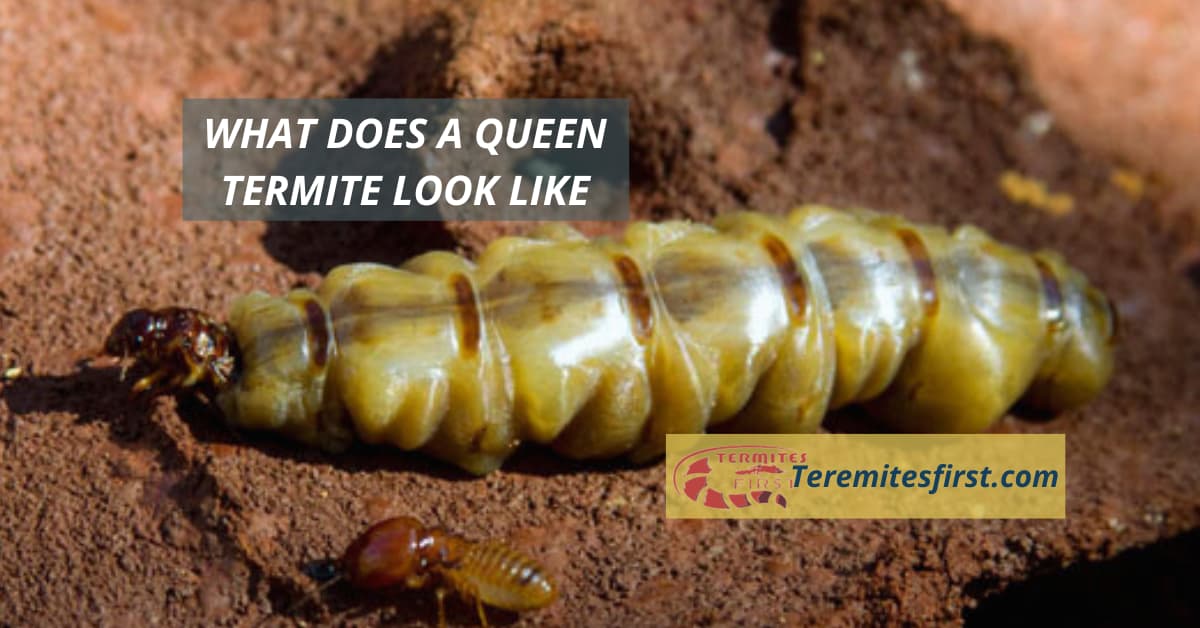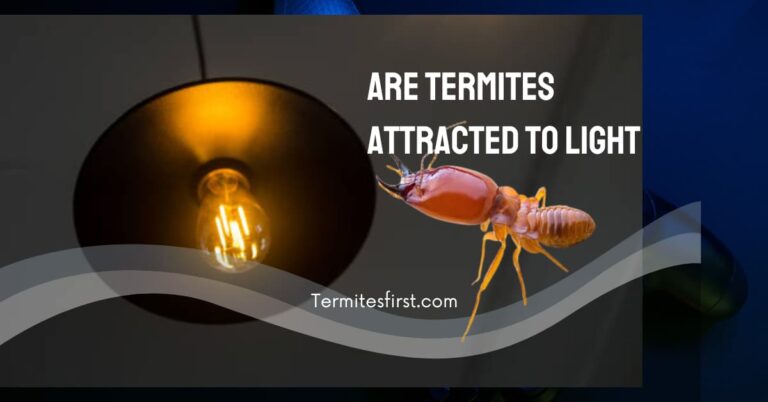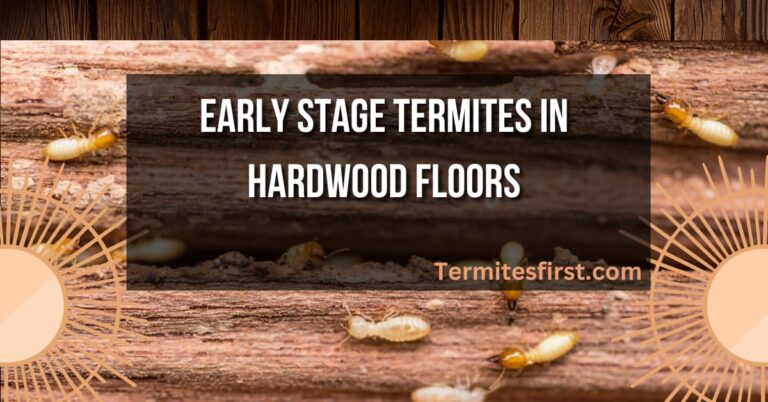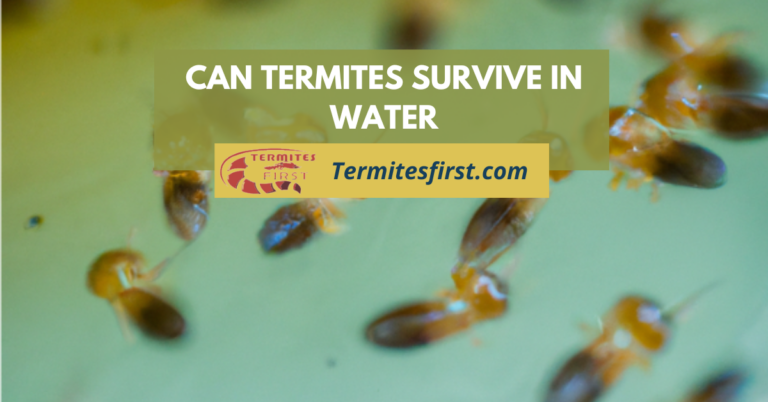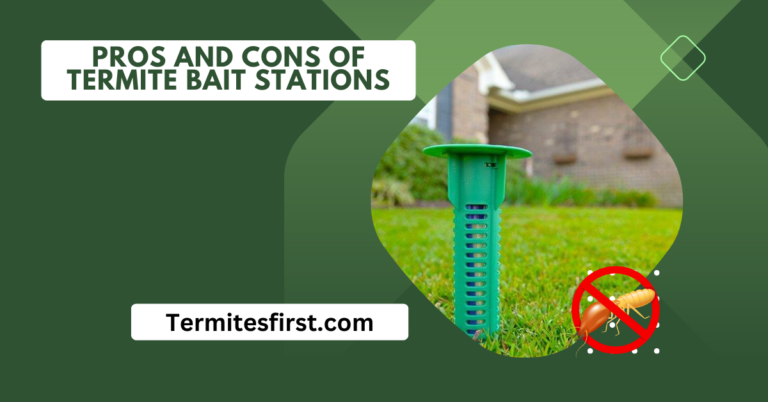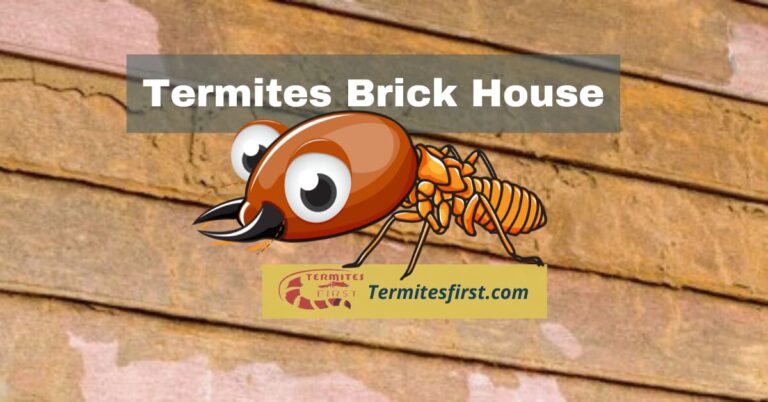What Does a Queen Termite Look Like? Insights on Size & Role
When I first learned about termites, I was surprised by how different the queen termite looks compared to other termites, and I realized the need for an exterminator. While worker termites are small and often unnoticed, an exterminator can easily identify the queen, who stands out with her impressive size and unique features. Her elongated body, characteristic of a subterranean termite queen, can reach up to a few inches long, making her the largest member of the colony with giant termite nests where the queen termite mates, showcasing the impressive termite queen size.
I found it fascinating that she, a termite queen, has a shiny, dark-colored exoskeleton that sets her apart from the termite workers in the new termite colony. Understanding what a queen termite looks like is essential for identifying infestations and protecting your home. Knowing this about termite infestation can save you time and money in pest control efforts. Let’s dive deeper into the world of these remarkable insects, including the termite queen, and discover more about their role in the colony.
Key Takeaways
- A queen termite is typically larger than other termites, with a long, oval-shaped body that can be up to several inches in length.
- She, the termite queen, plays a crucial role in the colony by laying thousands of eggs daily, ensuring the survival and growth of her community.
- The lifecycle of a queen termite involves several stages, from a young nymph to a fully mature queen, which can take years to develop.
- Queens influence the colony’s behavior and organization through pheromones, which help maintain social order and cohesion.
- Understanding the swarming and relocation habits of termite colonies can help homeowners identify potential infestations early.
- By recognizing the physical traits and roles of the queen termite, you can better manage pest control strategies in your home.
Spotting a Termite Queen
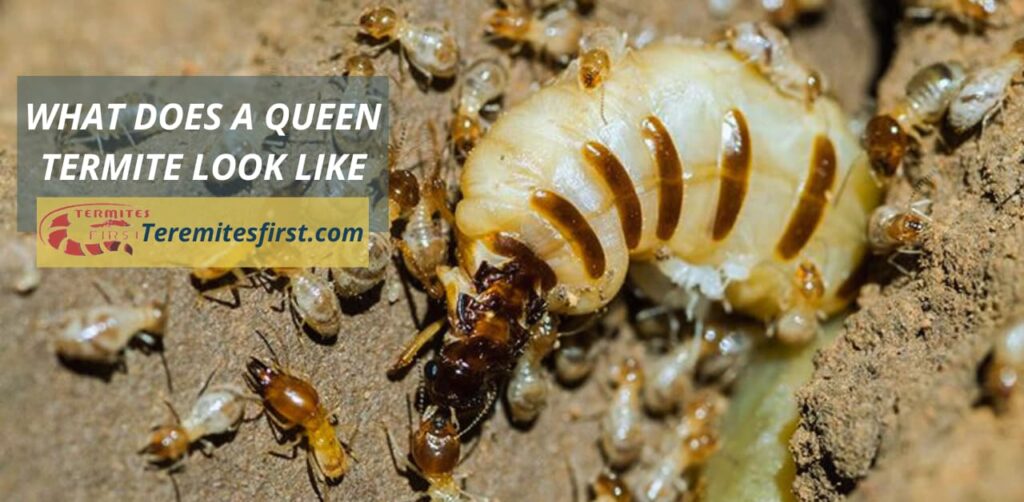
Size Matters
The mighty termite queen stands out due to her significantly larger size. She can be up to 10 times bigger than worker termites. This size difference is crucial for identification. I remember the first time I saw a queen termite; her size immediately caught my attention.
Her body, as a termite queen, can reach lengths of about 4 to 5 centimeters. This makes her one of the largest members in the termite colony. In contrast, typical worker termites are usually around 1 centimeter long. The sheer size of the queen termite helps her fulfill her role in the colony effectively.
Color Distinction
A termite queen also has a darker coloration compared to other termites. While worker and soldier termites often appear lighter, the queen’s body may be brown or even blackish. This color difference is not just aesthetic; it serves as an indicator of her role as a termite queen in the colony.
This distinction can help when trying to identify her, the termite queen, among the bustling activity of the nest. I found that understanding these color cues made it easier to spot them during my studies on termites.
Stationary Behavior
Observing behavior is another way to identify a queen termite. She typically remains stationary within the nest. Unlike worker termites, who are busy foraging and maintaining the colony, the queen focuses on reproduction.
Queen termites mate with king termites, producing thousands of eggs daily. This reproductive role keeps the colony thriving. Seeing a queen surrounded by workers emphasizes her importance in sustaining life within the termite nest.
Lifespan and Reproduction
Termite queens have a long lifespan, often living for several years. Some species, like subterranean termite queens, can live up to 25 years. Their longevity, especially that of the termite queen, allows them to build large colonies over time.
When new colonies form, swarms of termite swarmers emerge from existing colonies. During this process, queens mate and establish new nests. Understanding this lifecycle helps in recognizing when and where to look for queens.
Chemical Signals
Termite queens release pheromones that regulate colony activities. These chemicals signal workers about their health and reproductive status. The presence of these pheromones can indicate a healthy queen and a thriving colony.
I find it fascinating how these chemical signals, especially from the termite queen, play such an essential role in maintaining order within the colony.
Physical Traits of the Queen
Size
Queens can exceed four inches in length. This makes them significantly larger than other termite castes. Their size, like that of a termite queen, sets them apart, making it easier to identify them within a colony. I remember the first time I saw one; her size was shocking compared to the worker termites. The queen’s width is also notable. She is much wider than workers and soldiers. This extra space allows her body to store eggs.
Color Variations
Color varies among different species of queen termites. Subterranean queens are typically light or white. This coloration helps them blend into their environment. On the other hand, drywood queens tend to be yellow-brown. This difference in color can help in identifying the type of termite colony you are observing. I often find it fascinating how nature, like the termite queen, provides these variations for survival.
Body Structure
The body structure of a queen termite is unique. Her abdomen is notably swollen. This swelling indicates her primary role in egg production. A healthy queen can lay thousands of eggs daily. The shape of her body reflects this reproductive function. Workers and soldiers, like a termite queen, have more streamlined bodies, which aid in their roles.
I once read about a colony that thrived because of a prolific queen. Her ability to produce many eggs ensured the colony’s growth and survival during harsh conditions.
Importance of Identification
Identifying a queen termite can be crucial for pest control efforts. Knowing her physical traits helps in recognizing an infestation early on. Early detection can prevent extensive damage to structures and property.
Role in the Colony
Primary Reproductive Individual
The queen termite serves as the primary reproductive individual in her colony. She is essential for its survival. Without her, the colony cannot thrive. Her role is to lay thousands of eggs over her lifetime. A single queen can produce up to 30,000 eggs per day. This consistent egg production ensures that new workers and soldiers are always available.
I find it fascinating how one insect can have such a significant impact on an entire colony’s future. The queen’s ability to reproduce at such a high rate is truly remarkable.
Social Structure Influence
Her influence extends beyond reproduction. The queen termite shapes the social structure of the colony through her continuous egg-laying. Each caste within the colony has specific roles. Workers care for the young, gather food, and maintain the nest. Soldiers protect the colony from threats. The queen’s presence and productivity help maintain balance among these groups.
The dynamics in a termite colony remind me of a well-organized team. Each member has a role, and they depend on each other to succeed. The queen’s constant egg-laying creates a stable environment for all castes.
Population and Health Maintenance
Maintaining the population is one of her most critical responsibilities. The queen termite regulates the number of workers and soldiers based on the colony’s needs. If there are threats or food shortages, she may adjust her egg-laying rate. This adaptability helps ensure survival in changing conditions.
Her health directly affects the colony’s well-being. A sick or dying queen can lead to chaos within the colony. Workers may become disorganized without their leader. I’ve read about colonies that struggle when their queen dies unexpectedly. It shows how vital she is to their function and harmony.
Lifecycle and Development
Mating Process
Queen termites start their lifecycle with nuptial flights. During these flights, winged reproductives leave their colonies to mate. This usually occurs in warm weather, often in spring or early summer. After mating, the queen sheds her wings. She then searches for a suitable location to establish a new colony.
I find it fascinating how these small insects can create vast colonies from just one queen. The process seems simple yet has profound implications for their survival.
Colony Establishment
Once she finds a location, the queen begins laying eggs. Initially, she lays a small number of eggs. Over time, this increases as the colony grows. The queen’s primary role is to reproduce and ensure the colony thrives.
As her colony develops, she will also produce workers and soldiers. These termites help maintain the nest and protect it from threats. The queen can live for several years, sometimes even decades, depending on environmental conditions.
Lifespan Factors
The lifespan of a queen termite varies greatly. It can range from several years to over 30 years in some species. Factors influencing her lifespan include the species, habitat, and health of the colony. A healthy environment often leads to a longer life.
In my experience studying insects, I noticed that many factors affect their longevity. For example, temperature and food availability play significant roles in their development.
Reproductive Capacity
Over time, a queen’s reproductive capacity may decline. As she ages, her ability to produce eggs decreases. This reduction can impact the growth of her colony significantly. If she cannot lay enough eggs, the population may dwindle.
Queen termites have the ability to adjust their reproductive strategies based on the colony’s needs. Instead of solely laying eggs, they can prioritize producing more worker termites to help sustain and support the colony.
Egg-Laying Process
Oviposition
The queen termite carefully selects the best conditions for laying her eggs. She looks for a safe, moist environment. This helps ensure the survival of her offspring. The queen needs to be strategic during this process. I find it fascinating how she instinctively knows where to lay her eggs.
During oviposition, she uses an organ called an ovipositor. This tool allows her to deposit many eggs at once. A single queen can lay thousands of eggs in a day. This is crucial for the growth and expansion of the colony. Without this high egg production, the colony would struggle to thrive.
Egg Care
Once the queen lays her eggs, worker termites take over care duties. They tend to the eggs with great attention. Workers ensure that the eggs remain clean and protected from predators. They also maintain proper humidity levels around the eggs.
I have always admired how cooperative termites are. Each worker has a role that supports the colony’s success. Their teamwork is vital during this stage of development.
The workers also nurture the larvae after they hatch. They feed them and keep them safe until they mature into adult termites. This nurturing process is essential for a healthy colony. It ensures that there are enough workers and soldiers to support the queen.
Colony Growth
The egg-laying process directly impacts colony growth. A thriving colony relies on a steady supply of new termites. The more eggs laid, the larger the colony can become over time.
In my experience studying insects, I’ve noticed how critical reproduction is in nature. For termites, this means not just survival but dominance in their environment.
Queens can live for many years, continuously producing eggs throughout their life span. This longevity contributes significantly to a colony’s stability and strength.
Influence Through Pheromones
Chemical Signals
Queen termites play a crucial role in their colonies by emitting queen pheromones. These chemical signals help regulate the behavior of other termites. When she releases these pheromones, they spread throughout the colony. This process ensures that workers and soldiers know their roles.
I find it fascinating how these tiny creatures communicate through chemicals. The queen’s pheromones act like a command center, guiding the actions of her colony. For instance, if she needs more workers to care for her eggs, her pheromones signal those workers to increase their activity.
Social Cohesion
The queen termite also maintains social cohesion among different castes within the colony. She does this by producing specific pheromones that influence the development and behavior of other termites. These signals help ensure that there is harmony within the colony.
The worker termites need to understand their tasks clearly. The queen’s pheromones help them identify whether they should forage for food or care for young termites. I appreciate how nature has developed such an intricate system for organization and teamwork within these colonies.
Reproductive Control
Pheromones play a vital role in reproductive control as well. The queen’s chemical signals can inhibit the reproductive capabilities of other female termites in the colony. This ensures that only she lays eggs, maintaining her status as the primary reproductive member.
This control helps manage the population within the colony effectively. Without her pheromones, multiple females could attempt to reproduce, leading to chaos and competition. I think it’s impressive how one organism can regulate an entire community through simple chemical messages.
Development Influence
The influence of queen pheromones extends to the development of new termites too. These chemicals can determine whether a larva becomes a worker, soldier, or even another queen. By adjusting her pheromone production, she influences which caste will thrive in response to environmental needs.
This adaptability is essential for survival. If food sources are low, more soldiers may be needed to protect the colony. The queen can adjust her signals accordingly to ensure the colony can respond effectively to challenges.
Impact on Colony Dynamics
Hierarchical Structure
The queen termite serves as the heart of the colony. Her role is central to its survival and success. Each colony has a strict hierarchy, with the queen at the top. She commands the structure through her pheromones. These chemical signals regulate the activities of other termites.
In a termite colony, each type of termite has its own special job. Soldiers protect the nest, while workers are in charge of gathering food and taking care of the home. During the swarming season, alates play a key role in reproduction. The queen termite significantly impacts how these roles are carried out and influences the behavior of the entire colony.
I find it fascinating how one individual can shape an entire community’s functioning. The queen termite does not just reproduce; she orchestrates the daily life of her colony.
Role Influence
The queen’s health directly impacts the entire colony. A healthy queen produces many eggs, ensuring a strong population. This abundance allows workers to focus on their tasks without fear of extinction.
If she becomes ill or dies, chaos ensues. The workers may struggle to adapt to the sudden loss of their leader. Without her pheromones, they can become confused about their roles. Some may even stop working altogether.
I’ve read about colonies that collapse when their queen is removed. It shows how crucial her role is in maintaining order and harmony.
Reproductive Health
Reproductive health is vital for sustainability. A fertile queen lays thousands of eggs daily throughout her life, which can span up to 30 years. This continuous production supports colony growth and resilience against threats.
If the queen faces reproductive issues, the colony suffers. Fewer eggs mean fewer new termites to replace aging workers and soldiers. This decline can lead to weakened defenses and reduced food gathering.
In my opinion, understanding this dynamic helps appreciate how fragile these ecosystems are. A single factor can determine a colony’s fate.
Consequences of Dynamics
The consequences of the queen’s health extend beyond numbers. A thriving colony fosters cooperation among its members. Workers feel secure when they know their queen is healthy and active.
Conversely, stress from a failing queen leads to disorganization and conflict among termites. Soldiers might become overly aggressive or neglect their duties due to confusion about their roles.
Swarming and Relocation
Swarming Process
The swarming process is crucial for the life cycle of a queen termite. During specific times of the year, usually in warm weather, mature colonies release winged male and female alates. These alates leave their nests to mate in the air. I find it fascinating how this event marks the beginning of new colonies.
After mating, the female alate sheds her wings. She then searches for a suitable location to establish a new colony. This moment is vital because the future of the colony depends on her choice of site.
Finding Nesting Sites
Finding a nesting site involves careful selection. The queen termite looks for places that offer protection and access to food. Common locations include decaying wood or underground areas. Once she identifies a spot, she begins excavating.
Excavation requires significant effort. The queen uses her powerful jaws to create tunnels and chambers in the wood or soil. Her instinct guides her to ensure that the site can support a growing colony. I remember reading about how termites can adapt to various environments, which makes them resilient.
Laying Eggs
Once the nesting site is ready, the queen termite starts laying eggs. This process is essential for ensuring the colony’s survival. A healthy queen can lay thousands of eggs each day.
She continues to care for these eggs until they hatch into nymphs. These nymphs grow into workers, soldiers, or future reproductives. The queen’s role does not end with laying eggs; she also regulates their development by releasing pheromones.
Her ability to control the colony dynamics helps maintain balance within the community. Without her presence, a colony would struggle to thrive.
Conclusion:-
I’ve shared a lot about the queen termite’s appearance, role, and influence within her colony. Understanding her physical traits helps me appreciate her importance. From egg-laying to pheromone signaling, she’s the linchpin of colony life. Observing her lifecycle offers insights into how colonies thrive and adapt.
If you’re curious about termites, keep exploring! Learning more can help you identify these fascinating creatures in your own backyard. Whether you’re dealing with an infestation or just want to know more, knowledge is power. Dive deeper into the world of termites and discover how their unique dynamics can impact your environment. Don’t miss out on the chance to become an expert in this area!
FAQ’s:-
A queen termite is typically larger than other termites, measuring about 3 to 4 inches long. She has a thick, elongated body and is often wingless. Her color can range from creamy white to light brown.
A queen termite can lay thousands of eggs daily, sometimes up to 30,000. This prolific reproduction is essential for maintaining a healthy colony.
The queen’s primary role is reproduction. She ensures the colony’s growth and sustainability by laying eggs and maintaining the population.
Queen termites can live for several years, often up to 25 years or more. Their long lifespan contributes significantly to the stability of the colony.
The queen releases pheromones that regulate the colony’s behavior and hierarchy. These chemical signals help maintain order and cohesion among colony members.

